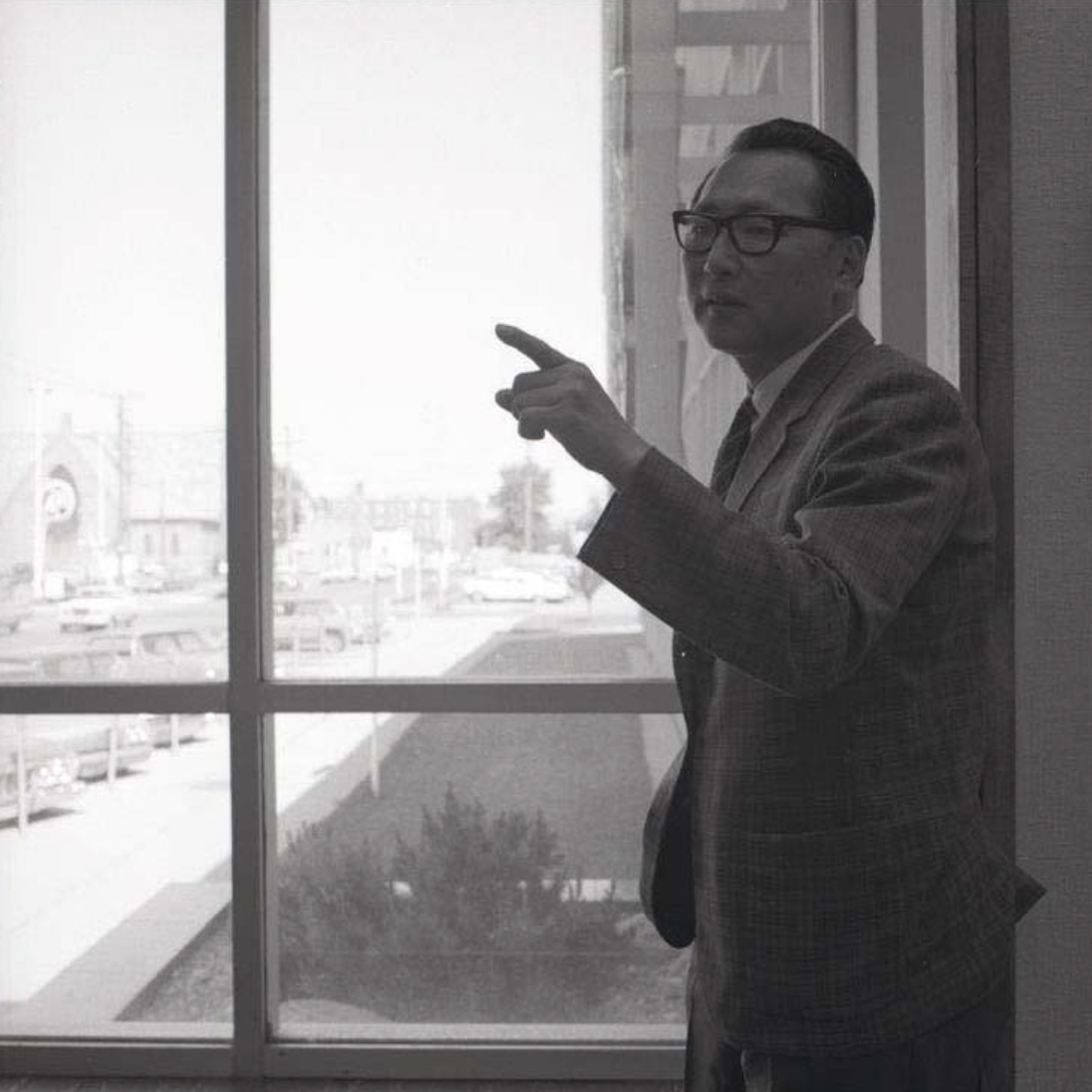Architects
Kiyoshi "Joe" Izumi
Born: –Died:
- Rule, Wynn, and Rule,
- Izumi Arnott Sugiyama Architects Engineers and Town Planners
Biography
Kiyoshi Izumi was born in Vancouver, British Columbia, March 24th, 1921. Kiyoshi’s success in school and university during the 1920s and 1930s made him a target for racism in a province that was increasingly hostile to people of Japanese ancestry. In his University of Manitoba yearbook, it is noted that Kiyoshi began supporting himself when he was fourteen years old. This was necessary, given Kiyoshi’s challenging early adulthood, and it was during this time that he would show is tenacity and perseverance.
Kiyoshi would graduate from Vancouver Technical College in 1939. His whereabouts between 1939 and 1943 is unclear. It can be assumed that, as a resident of British Columbia, Kiyoshi might have been affected by the anti-Japanese policies instituted in Canada during the Second World War. Following the Japanese naval attack on Pearl Harbour in December of 1941, laws would be instituted that allowed for the misappropriation of property (including homes, cars, and businesses) from people of Japanese ancestry along Canada’s west coast. This property would be auctioned off to finance the construction of internment camps for their former owners, who were forcibly displaced relocated from the coast to the B.C. and Alberta interior. How Kiyoshi Izumi avoided this fate is unclear. During the war, he would move to Regina, Saskatchewan, and enrol at Regina College in 1943. People of Japanese ancestry were prohibited from being residents of Saskatoon, while they were permitted to live in Regina if their family could prove they were financially security. This might offer a possible explanation for Kiyoshi’s relocation during the war. Still, even in Saskatchewan, the small Japanese community was subjected to discrimination, being required to report their whereabouts to RCMP officers once a month and carry identification cards at all times. A similar journey was followed by James Shunichi Sugiyama, Izumi’s future business partner. Both would be part of the Nesei Club at Regina College, and would both study at the University of Manitoba.
People of Japanese ancestry were treated comparatively better in Saskatchewan than in B.C., but discrimination, and perhaps lack of opportunity, prompted Izumi to attend the University of Manitoba,. While other Japanese remained interned, or toiled away as farm labourers, Izumi was able to attend university, even during the war. In some instances, people of Japanese ancestry were allowed to attend post secondary in Canada during the war, albeit after being accepted to a school (and sometimes being denied the right to move to a new city despite their invitation to attend post-secondary there). While studying at the University of Manitoba, Kiyoshi would win the Pilkington Glass Scholarship in 1948, and would be awarded the first Royal Architectural Institute of Canada College of Fellows Scholarship in 1950 to study in England. Curiously, Kiyoshi would identify as a “citizen of the world” in his University of Manitoba yearbook, a subtle reminder that, like many Japanese in Canada, he had no home to return to. Kiyoshi would graduate from the University of Manitoba in 1948, and would go on to study architecture at the London School of Economics, urban planning at the Massachusetts Institute of Technology, and the Graduate School of Design at Harvard from 1950-1954.
In the early 1950s, Izumi, along with other university of Manitoba graduates Gordon Arnott (architecture) and James Sugiyama (engineer), would found the firm Izumi Arnott Sugiyama Architects Engineers and Town Planners. The firm soon became one of the most successful in Regina and Saskatchewan. The province was an ideal place for upstart architects, as the Great Depression of the 1930s and Second World War had resulted in many architects leaving the province. In the early 1950s, competition was minimal, and space existed for growth and experimentation.
A sometimes-unorthodox approach characterized Izumi’s work, exemplified by his remodelling of Saskatchewan’s mental health facilities. He would voluntarily take LSD, producing an experience similar to schizophrenia, in order to better understand the needs of patients. This experimentation would help inform the design of the Yorkton Centre mental hospital, in Yorkton Saskatchewan.
In 1986, Kiyoshi Izumi became part of the faculty of Environmental Studies at the University of Saskatchewan. He would later teach at the University of Waterloo, before retiring in 1986. After a decade of retirement, he would pass away in 1996.
Projects
Marquis Hall, University of Saskatchewan, 97 Campus Drive, Saskatoon, Saskatchewan, 1962-1964
Connexus Arts Centre/Regina Centre of the Arts, 200 Lakeshore Drive, Regina, Saskatchewan, 1970
Regina Public Library – Central and Children’s Branch, 2311 12 Avenue, Regina, Saskatchewan, 1962
Yorkton Psychiatric Centre, 270 Bradbrooke Drive, Yorkton, Saskatchewan, 1964
Recognition & Awards
Pilkington Glass Scholarship 1948
Royal Architectural Institute of Canada College of Fellows Scholarship 1950

